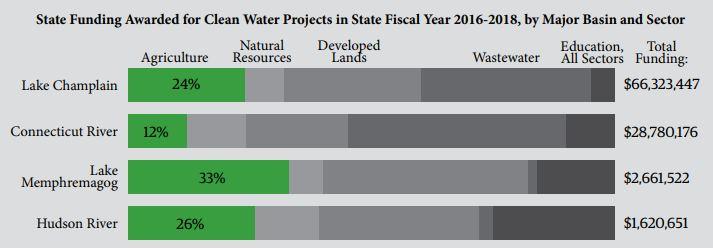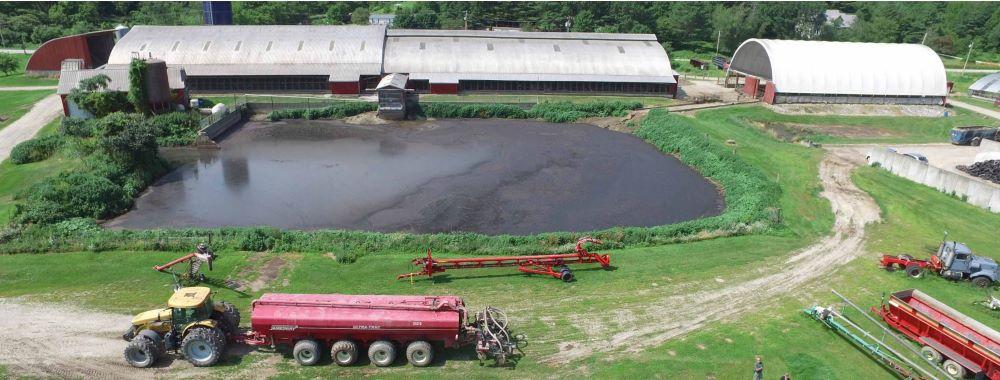

Our challenge is to find a path forward in Vermont agriculture that allows for food production while protecting water quality. Agriculture dominates Vermont’s working landscape in many parts of the state and is also important to the state’s economy, both directly and indirectly. Similarly, our natural resources, including clean water, are why many people live in Vermont or come to visit, fueling the tax base and the tourism economy. At the present moment, agriculture is experiencing an explosion of momentum around the concept of “soil health,” a steep escalation in concerns and investments in water quality, and an intensification of the confounding effects of climate change. We will need to use common sense, the power of community, respect, sound science, and creativity to successfully navigate the dynamic intersection of these tightly interwoven factors.
The 2016 issuance of a federal Total Maximum Daily Load (TMDL) to limit phosphorus (P) loading to Lake Champlain drew much public attention to the connections between agriculture and water quality in Vermont. Harmful algal blooms in the lake, which are partially attributable to P in the water, have increased in severity since 2016. While there are many sources of P runoff across the landscape (including urban areas, roads, and wastewater treatment plants), models estimate that approximately 41% of the P entering Lake Champlain comes from agricultural lands. State legislation, such as 6 V.S.A. § 4803, has increased regulation and oversight on the agricultural sector.
At the same time, significant state and federal resources for improved farm management and infrastructure have been allocated to the agricultural sector. In general, farmers have stepped up to the challenge, and have significantly increased implementation levels of Best Management Practices (BMPs). BMPs include structural improvements (e.g., manure storage) and field-based changes related to increasing soil health and minimizing risk of nutrient and soil losses (e.g., cover crops and manure injection). There is clear momentum in the farming community toward improved management, and farmers are now becoming very interested in potential systems that would compensate them for various “ecosystem services” they provide to the state (e.g., carbon sequestration).
Simultaneously, further improvements to water quality may be hindered due to economic turmoil on many farms, combined with an aging farmer population that has a hesitation to invest in infrastructure upgrades. Probably even more impactful is climate change, which has brought more frequent heavy storms, increasing the potential for erosion and nutrient loss from fields. Despite these challenges, farmers, educators, researchers, and other service providers continue to make progress toward environmental goals and economic viability by working collaboratively across multiple agencies and organizations

